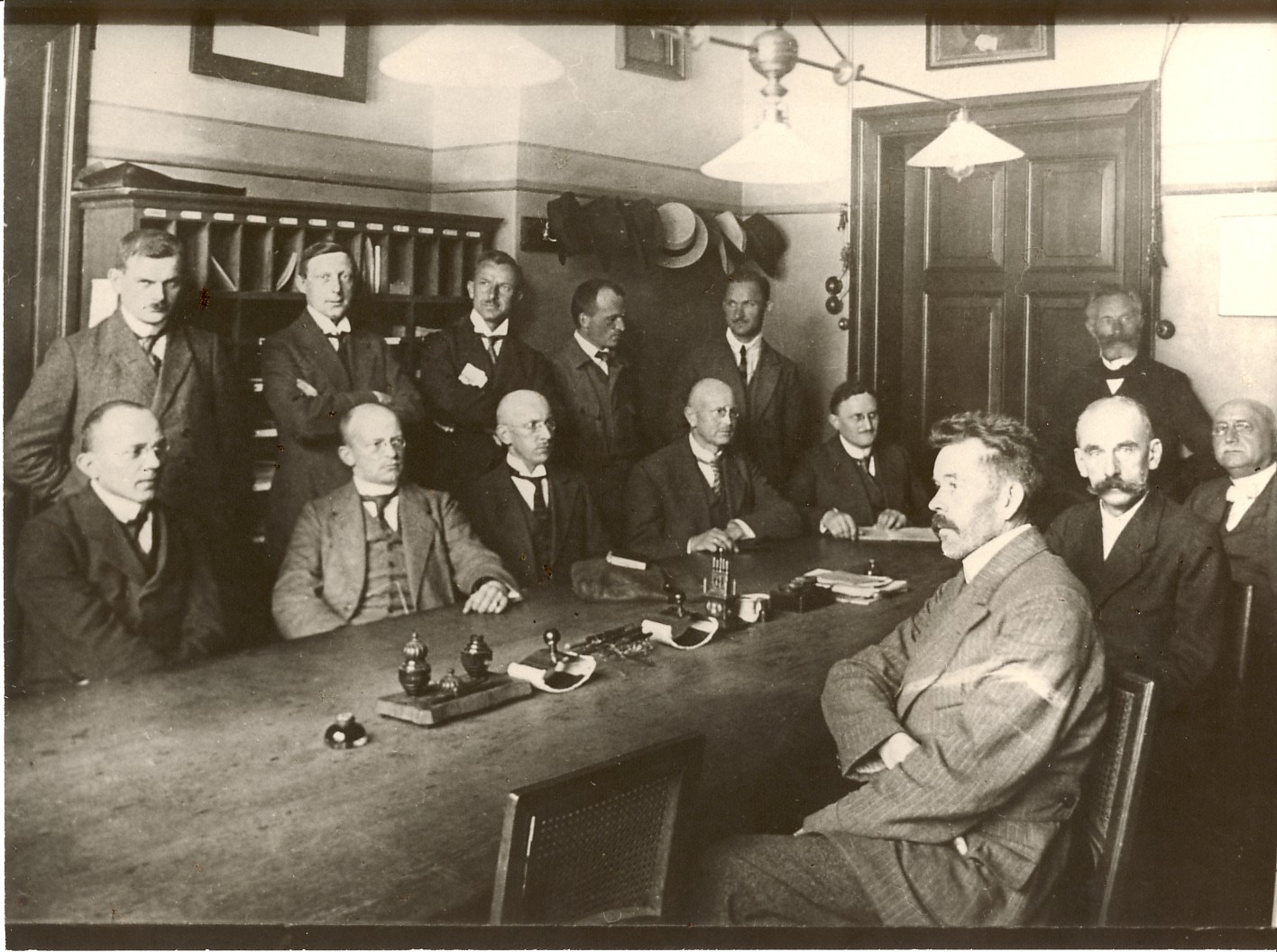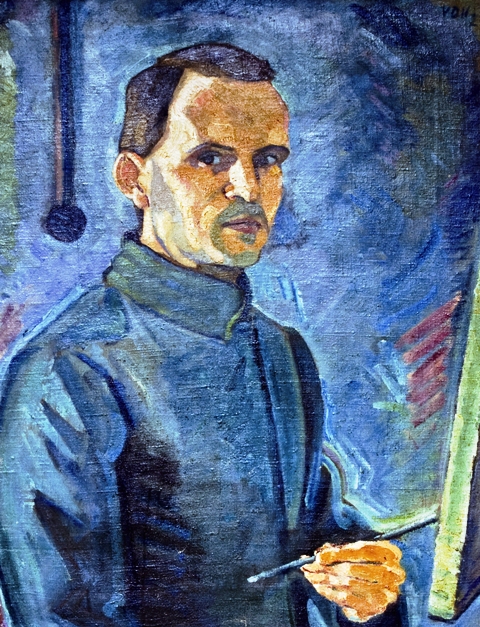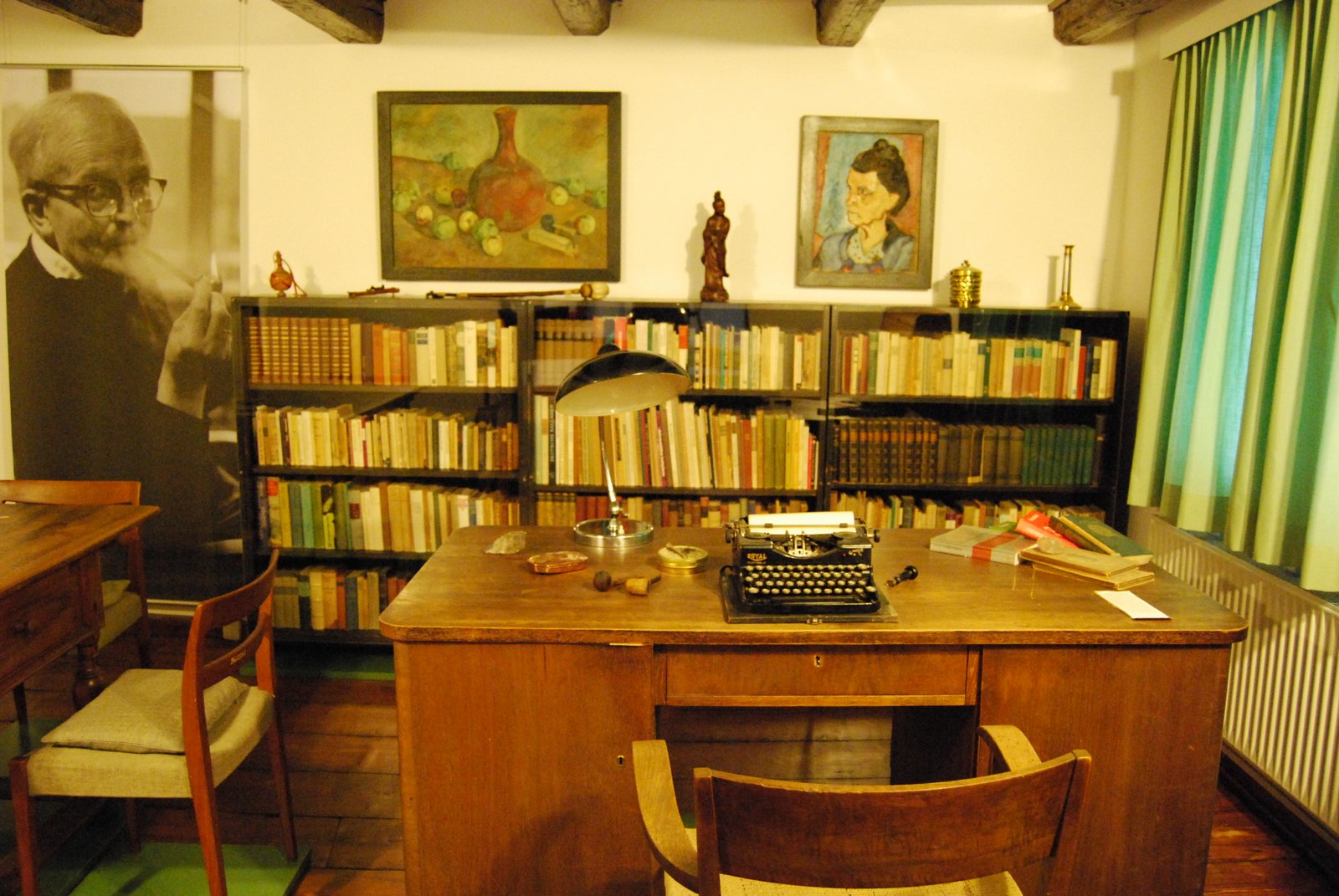
Bewerten
d049d690-b48a-4ac8-b792-167483e63df6|0|.0|96d5b379-7e1d-4dac-a6ba-1e50db561b04
Georg von der Vring (1889-1968), until this day the only honorary citizen of Brake, was a writer and a painter. He grew up at the house of his grandfather Georg Suhren in the Schulstrasse in Brake. Georg von der Vring attended the Evangelical Educational Seminar in Oldenburg and subsequently the Royal Academy of Arts in Berlin. In addition to his merit as a painter, he also gained recognition as an author. In 1927, his book “Soldier Suhren” was regarded as the first German anti-war novel. Already at the age of 14, Georg von der Vring left his city of birth, but he remained tru to Brake throughout his life. His grave is located in the cemetary Kirchhammelwarden. The Maritime Museum of the Oldenburgian Lower Weser honors the artist with a small exhibition.
Born and raised in Brake
 Mariengymnasium Jever
Mariengymnasium Jever
Staff
Georg von der Vring, born in 1889 in Brake along the Lower Weser, is known today for his poetry, assuming that the name still rings a bell at all. Uwe Tellkamp regards von der Vring and his colleagues Hans Carossa and Theodor Kramer as being among the “most underestimated and forgotten masters”. The painter and writer Georg von der Vring was born on the 30th of December 1889 in the house of his grandfather, the mater painter Georg Suhren, in the Schulstrasse in Brake. Throughout his life, he remained loyal to his city of birth. Many of his works contain autobiographical influences and involve the period of his childhood. “In my place of origin // no one wrote poems”. Notwithstanding this determination, Georg von der Vring is the only person ever to have been named an honorary citizen of the harbor city.
Between War and Self-Realization
In 1904, von der Vring participated in a seminar for prospective teachers in Oldenburg. Between 1912 and 1914, he was an art student in Berlin. His idols were Van Gogh, Cézanne, Munch, Kokoschka, Nolde and the masters of the “Brücke” (“Bridge”). As a soldier he experienced the First World War first hand, an experience which he would later address in his novel “Soldat Suhren” of 1927. In 1917, von der Vring married Resi Oberlindober, the daughter of a staff officer, but she died barely ten years later. In 1918, von der Vring was captured as a prisoner of war by the Americans.
 Self-portrait
From 1919 until 1928, he was a teacher of illustration techniques in Jever. He founded the artists´ group “Barke” and organized exhibitions. Up until 1926, he focused his efforts on painting. In Jever, he created some 80 oil paintings, 300 aquarelles and approximately 1,000 drawings and wood carvings. Ultimately, he also began to write. His war novel “Soldat Suhren” is considered to be one of the first German First World War I novels ever written, and it appeared on the literary scene in 1927, ahead of the famous “Im Westen nichts Neues” (“All quiet on the Western Front”) by Erich Maria Remarque. Later, von der Vring resigned from public service and dedicated himself now completely to painting and writing.
Self-portrait
From 1919 until 1928, he was a teacher of illustration techniques in Jever. He founded the artists´ group “Barke” and organized exhibitions. Up until 1926, he focused his efforts on painting. In Jever, he created some 80 oil paintings, 300 aquarelles and approximately 1,000 drawings and wood carvings. Ultimately, he also began to write. His war novel “Soldat Suhren” is considered to be one of the first German First World War I novels ever written, and it appeared on the literary scene in 1927, ahead of the famous “Im Westen nichts Neues” (“All quiet on the Western Front”) by Erich Maria Remarque. Later, von der Vring resigned from public service and dedicated himself now completely to painting and writing.
Close Ties
As of 1951, now being married for the third time, he lived and worked in Munich. He became a member of the Bavarian Academy of Fine Arts in 1953 and of the German Academy for Language and Poetry in Darmstadt in the following year. In 1958, he received Munich´s Advancement Award for Literature. In 1959, he was awarded the Grand Order of Merit of the Federal Republic of Germany. Throughout his entire life, von der Vring remained loyal to his city of birth. In many poems, but also in some of his prose, for example, there are clear or subtle references and declarations of love made to his “City on the River”. Georg von der Vring took his life in Munich in 1968. He is buried in the Cemetery of Hammelwarden.
Honoring the Memory
Today, Georg von der Vring is indeed a forgotten soul in many respects. Since 2001, nevertheless, the Association “Georg-von-der-Vring-Gesellschaft“ has been working hard to honor his memory. In 2014, a commemorative stele was dedicated to him along the pier of Brake, and a memorial plaque was inaugurated in his honor in the Cemetery of Hammelwarden in the same year.
Experiences in the museum
"Haus Borgstede & Becker" shows a reconstruction of the Munich study and a film to inform you about von der Vring’s life. The furniture, books, and fixtures were set up true to the original in Brake. On the walls hang pictures von der Vring painted alongside his literary activity.
You can find more information on Georg von der Vring at the "Hammelwarden Cemetery" station.
Maritime Museum - "Haus Borgstede & Becker", Breite Straße 9, 26919 Brake - 2nd floor
Hammelwarden Cemetery, Hammelwarder Straße 3, 26919 Brake

Additional information and offers
Culture Call: For this station, there is a CultureCall available, provided by BrakeVerein.
Click the logo to reach the entry, or call one of the following numbers and select Station 21.
German: +49 4401 / 102-102
Low German: +49 4401 / 102-103
